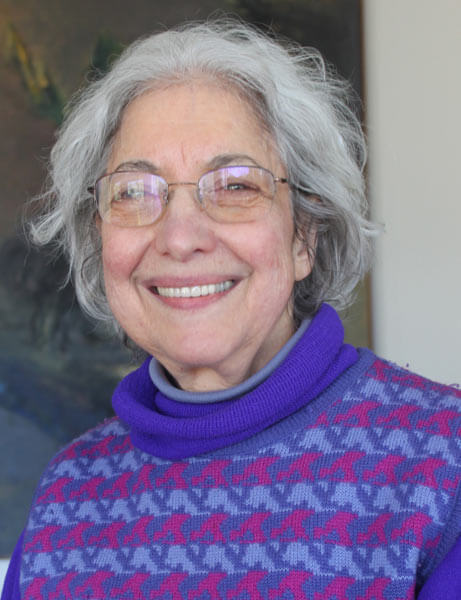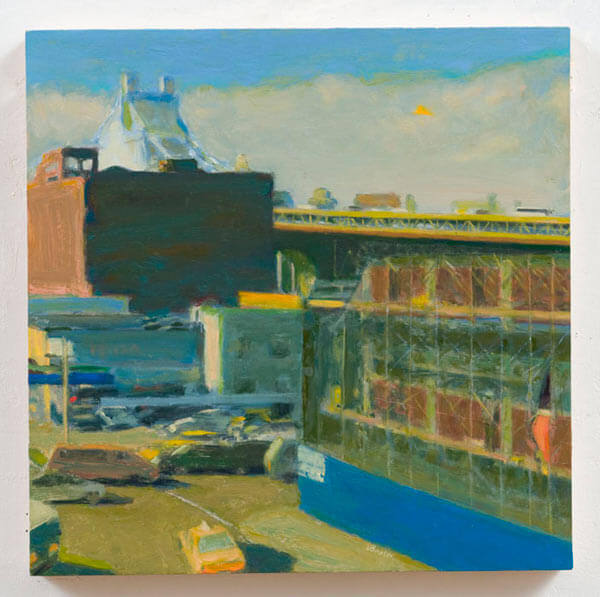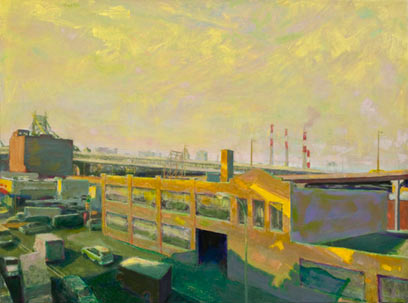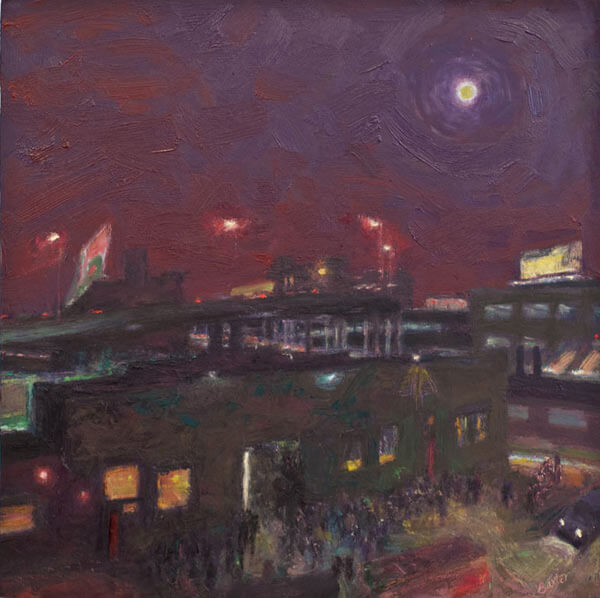By Allison Plitt
Painter Violet Baxter has spent most of her artistic career painting scenes outside her different studios’ windows.
“There are drawings and paintings that I’ve made completely from fleeting images,” Baxter said. “As the painting is usually a puzzle, the process of having to find a way to resolution can take months or even much longer. By this process, it becomes a work relying on memory, gradually gathering layers of meaning. In this way then, memory plays a leading role.”
For the first 20 years, Baxter captured the views from her studio located at Union Square in Manhattan. Later, she moved her studio to Long Island City where she has accumulated more than 10 years’ worth of paintings of sights from outside her windows, including bridges, buildings, trucks, roads and, of course, the sky.
Born and raised in the Bronx, Baxter knew as a young child she would be a painter by all the attention she received from her own artwork. She went to high school at the School of Art and Design in Manhattan. After she finished, she moved into the city which eventually led to her studying at Cooper Union, where she graduated with honors.
Shortly thereafter, she enrolled at Columbia University to study with artist Ralph Mayer, who was well-known for his research on art materials and techniques.
Subsequent to her work with Mayer, she took a job in the publishing world doing calligraphy and “paste-ups and mechanicals,” which involved putting together text and pictures for newspaper or magazine reproduction.
Baxter got married and had a daughter at the dawn of computer publishing, in which she showed no interest in learning. Instead, during that time, she worked for Pratt Institute, where she taught calligraphy in a program called “Classrooms Without Walls,” to students at her home.
Returning to the art world full time in 1980, Baxter began her solo career as an abstract artist which meant she focused on color, form and line to create a composition. She moved into her Union Square studio in 1983, creating paintings by using three different mediums — pastel, oil paint and watercolor.
Although some of her earlier and more renowned pieces were made with pastel, she eventually stopped using it.
“I don’t do much work with pastel now, though I continue to accept restoration commissions. I have avoided this medium because of not wanting to inhale the pastel dusts,” she said. “Many people know my work in pastel, but I’m happy to paint now with oils that sometimes resemble the pastels I created.”
Baxter eventually evolved into a representational painter, meaning she depicts in her paintings things people easily recognize. Be it abstract or representational painting, she often starts by sketching a design.
“Drawing is primary for me,” Baxter said. “It is an exercise that helps me to understand the problems in the work. Even when I was an abstract painter, drawing remained essential.”
Sometimes taking up to two years to finish a painting, Baxter applies layers of color to her canvases because she says subjects change color over time. She also prefers to depict images of subjects that do not remain stationary.
Besides memory, Baxter’s work also displays the variations of different lights.
“I’m very affected by light,” Baxter said. “I like to watch how it changes and forms whatever I am looking at. ‘Night Lights’ is the title of a series of paintings based on the view I know so well in daylight. At night this view transforms into mystery with barely caught images of cars and trucks going by, flashes of light, touches of people and other indescribable things in the dark. This dark fascinates me.”
Baxter also works on canvases of varying sizes to experiment with the visual image of her painting.
“I work on small panels that I sometimes make larger,” she said. “I also find it useful to shift it onto varying sizes. It’s interesting to see how the scale of a piece can alter one’s perceptions of the painting.”
What Baxter desires most is to create artwork that will leave a lasting impression on its audience. Recalling going to museums as a child, she says she still revisits certain paintings to find something new that recaptures her attention.
“I favor painting that comes to the viewer slowly, that as it is looked at, it develops. I want the painting to keep opening up over the years, that it has lasting power,” Baxter said. “As I paint, my work may accumulate layers of meaning, of feeling and memory. From this comes the hope that some of my paintings will be able to remain in one’s memory.”
For more information about Violet Baxter and her artwork, you can view her work online at www.fedart.org/page%20portfolio/Baxter.htm.





































